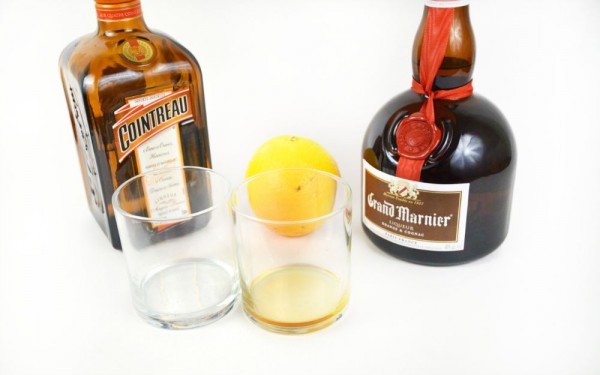Cointreau vs. Grand Marnier: What’s the Difference?
Contributed by on Aug 03, 2015
Three readers love this post.

The recipe calls for Cointreau. You only have Grand Marnier.
Or vice-versa. Or it calls for Triple sec. Yikes. Now what?
Can you substitute Cointreau for Grand Marnier? Do you have to make any adjustments to the recipe?
All good questions. But before we get there, let’s back up a little bit and see how these two tasty liqueurs compare.
Common Ground
Let’s start with what they have in common:
1. They are Orange Liqueurs
Cointreau and Grand Marnier are both orange liqueurs. At its simplest, that means they are alcoholic, flavored with orange, and they have been sweetened.
2. Alcohol Content
Both are 40% ABV.
3. They originate in France in the late 1800’s
I couldn’t track down where Grand Marnier is made nowadays, but I can tell you the story began with the purchase of a liqueur distillery in Neauphle-le-Château – about an hour outside Paris. Cointreau is made in Saint-Barthélemy-d’Anjou – about three and a half hours south-west of Paris, in the Pays de la Loire region. Cointreau was first sold in 1875, preceding Grand Marnier by only five years.

(For both of our sakes, please don’t ask me to pronounce any of the above.)
Where they Differ
While they do have quite a bit in common, Cointreau and Grand Marnier are actually considered to be different styles of orange liqueur, as they are made in different ways. Their sweetness and flavor profile also differ slightly and can produce different results in cocktails.
How They are Made
Cointreau
Cointreau starts as a 96% ABV sugar beet alcohol, which is added to the still along with a mixture of bitter and sweet oranges from Brazil, Africa and Spain. The mixture is left overnight before being distilled twice. According to Cointreau, their liqueur has “the highest amount of essential oils and the lowest amount of added sugar”. (Source)
Since Cointreau uses both sweet and bitter oranges, it’s considered to be in the “triple sec” style. It is not typically aged.
Grand Marnier
Unlike Cointreau, Grand Marnier is made with cognac and bitter oranges. As a result it is considered to be of the curaçao style – named after the origin of one type of bitter orange. In fact, Grand Marnier was actually originally named “Curaçao Marnier”, as it was just one part of a large range of flavored liqueurs. (Source) Since Grand Marnier is made with Cognac, the spirit has been aged.

Taste: Flavor and Sweetness
In my opinion, Cointreau has a much “cleaner” orange flavor, and a stronger orange oil aroma. On the other hand, Grand Marnier tastes sweeter and heavier – even though it actually has fewer carbohydrates per ounce. It also brings the flavors you’d expect in a liqueur made with a barrel-aged spirit: vanilla and an oaky sweetness.
| Cointreau | Grand Marnier | |
| Flavor | Sweet, intense, clean orange essence | Sweet orange oil with Vanilla and oak tones |
| Nose | Fragrant orange | Orange peel Vanilla, oak, grassy notes |
| Mouth Feel | Lighter | Heavier |
| Specific Gravity | 1.04 | 1.03 |
| Carbohydrates per ounce | 7.4 | 6.5 |
Use in Cocktails
In my opinion, Cointreau is more versatile in cocktails. It works well with lighter spirits like light rums, gin, tequila, and vodka. Grand Marnier is much heavier, which can throw off a lighter style cocktail like a Corpse Reviver #2 or Cosmopolitan. In fact, if you look back at the old cocktail books starting from the late 1800’s, you’re far more likely to see Cointreau than Grand Marnier listed.
The Bottom Line
Cointreau and Grand Marnier have quite a bit in common, and in a pinch you can certainly substitute between the two. If you do, expect the flavor profile to change. Cointreau will make the drink lighter and brighter, with a stronger citrus aroma. Grand Marnier will bring weight and oaky sweetness. If you’re substituting Grand Marnier for Cointreau, consider reducing the other sweeteners in the drink slightly to account for its added sweetness and weight. (And vice versa.)

Cointreau vs. Grand Marnier: What’s the Difference? is a post from: A Bar Above Mixology
